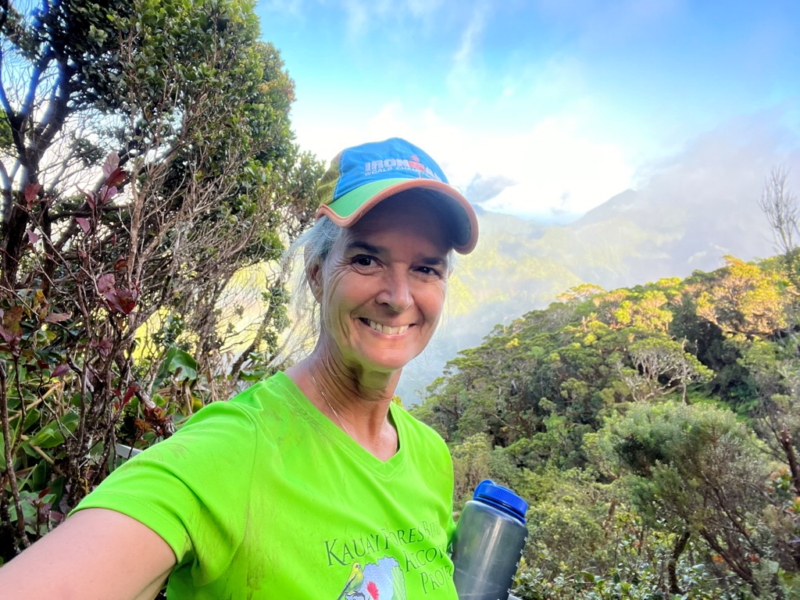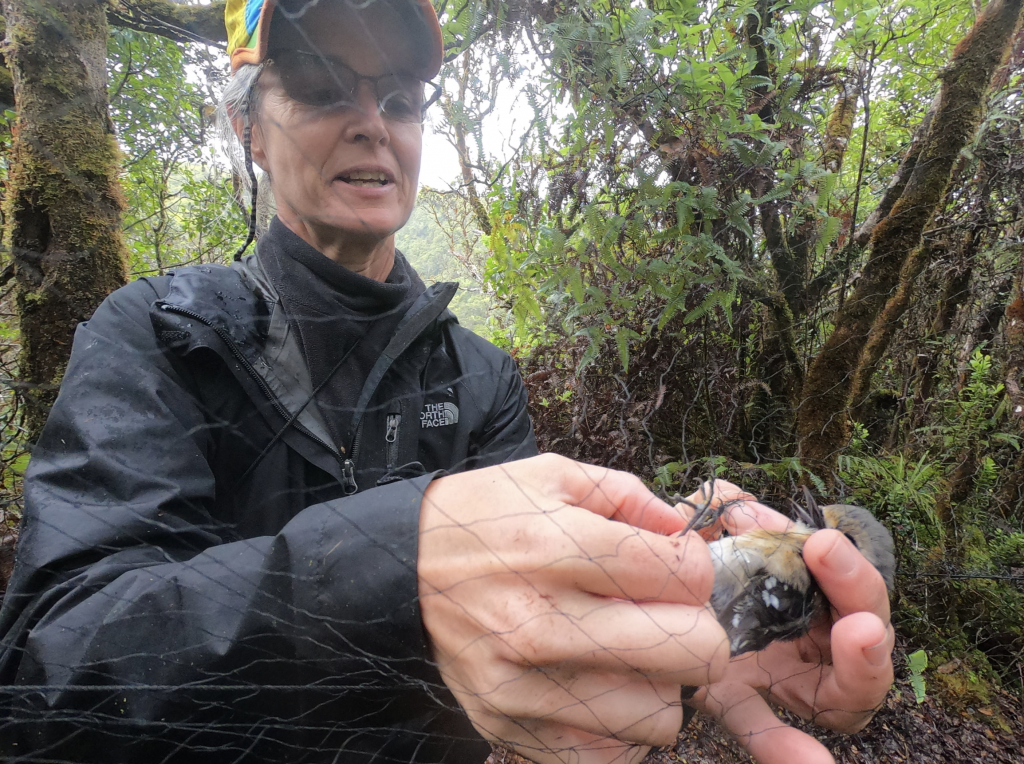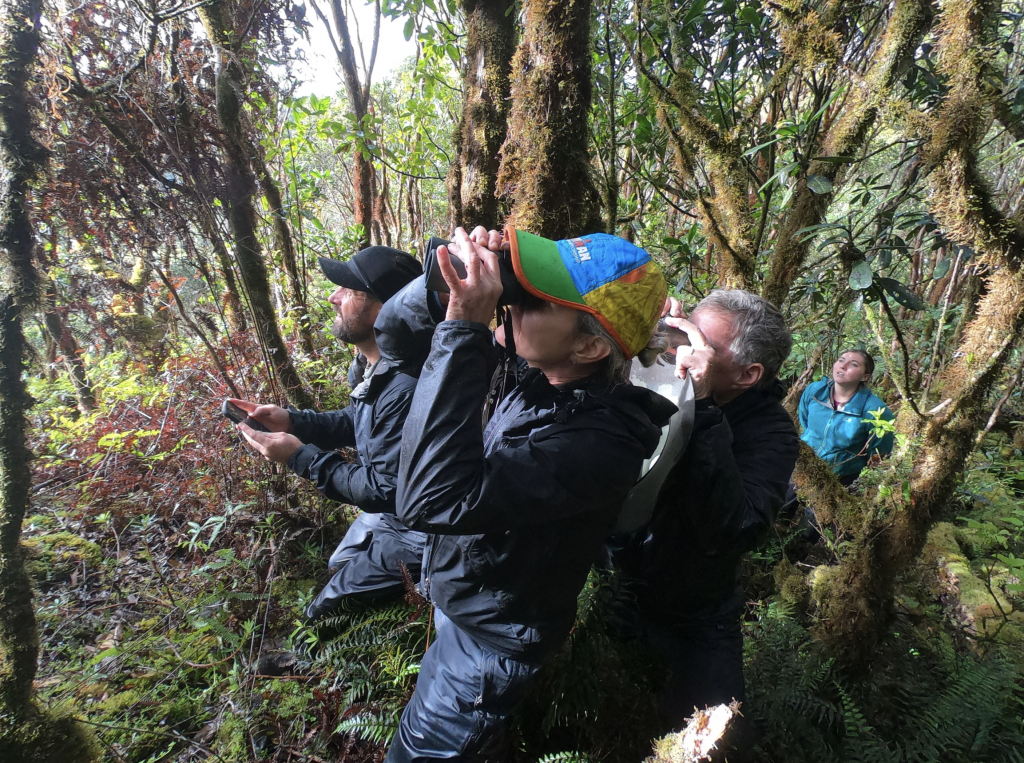As the Project Leader for the Kaua’i Forest Bird Recovery Project since 2010, Dr. Lisa “Cali” Crampton is no stranger to the intricacies of avian ecosystems.

Her doctoral research explored the ecology and conservation of Silky-flycatchers (Phainopepla nitens), shedding light on the plight of these threatened passerines in southern Nevada. Not content with theoretical contributions, she led a dynamic team in designing an adaptive management plan as part of the regional Habitat Conservation Plan, a planning document that is recognized by the U.S. Fish and Wildlife Service as part of the enforcement of the Endangered Species Act, ensuring the preservation of threatened desert woodlands crucial to the survival of Phainopeplas and other sensitive species in Nevada.
Dr. Crampton’s wingspan extends beyond the arid landscapes of Nevada. During her tenure at the USGS Kilauea Field Station on Hawai‘i Island, she applied her expertise in multivariate statistical and spatial analysis (tools that assist researchers or analysts in making sense of complex information and identifying patterns or trends that might not be apparent when looking at individual pieces of data to unravel the mysteries of the endangered Laysan teal. Her work not only enhanced our understanding of the population and behavioral ecology of this endangered species but also contributed to more effective monitoring and management strategies.

The impact of Dr. Crampton’s endeavors expand across diverse ecosystems. For the US Forest Service, she meticulously analyzed the repercussions of recreation on Sierra Nevada forest birds, small mammals, and carnivores. Throughout her varied projects, she has been a beacon of collaboration, seamlessly bridging the gap between scientific and non-scientific communities.
Dr. Cali Crampton’s passion, expertise and her ability to communicate complex scientific concepts to a broader audience make her not just a scientist but a true advocate bringing the wonders of bird conservation to the hearts and minds of the general public.
*All images and information courtesy of the Hawaii Dept. of Land and Natural Resources.
Disclaimer: The views and opinions expressed in this interview are those of the interviewees and do not necessarily reflect the views or positions of Public Health Landscape or Valent BioSciences, LLC.
